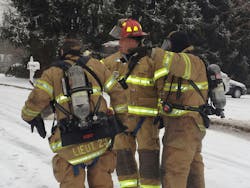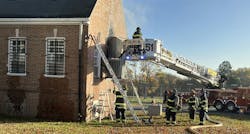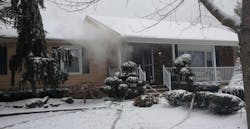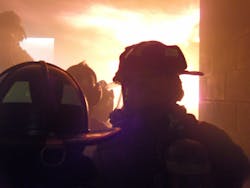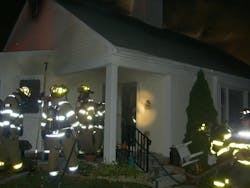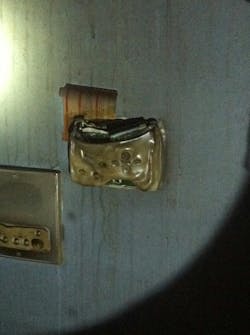Fire Studies: An Insufficient C-A-N Report Puts Fireground Commanders, Officers & Firefighters at Risk
Key Takeaways
- Lack of communication on the fireground continually surfaces as a causal factor in line-of-duty injuries and fatalities.
- Fire dynamics that are crucial to obtain from the exterior are movement, ignitability, temperature, color and height of neutral plane.
- Company officers who coordinate interior operations must communicate to the incident commander the condition of the structure/building, possible locations of victims, areas searched and secured, actions that were taken and needs of interior crews.
Standing at the command post and running an emergency incident place a lot of responsibility on someone who manages resources on scene. As the incident commander (IC), what you don’t know about is what can hurt your members. Even the best positioning leaves unseen areas on the fireground. Most commonly, areas that are in the rear of the structure, roof areas, exterior exposures and sides must be addressed.
A significant area of concern is the interior during the fire. It’s critical that interior crews give the IC as much accurate information as possible. One of the causal factors that have been identified by National Institute for Occupational Safety and Health (NIOSH) as continually surfacing in line-of-duty injuries and fatalities is lack of communication. If that information isn’t provided to the command post, the IC probably isn’t addressing the issues, mainly because the IC doesn’t know about them.
Proper reports allow for proper and timely decisions to be made on the fireground with all of the pertinent information that’s needed.
C-A-N report
As a wise chief officer taught me, “All assignments begin and end at the command post.” This is where assignments for coordinated operations begin and are terminated.
There typically are two vantage points for information that’s collected on the fireground: the exterior and the interior.
Exterior reconnaissance can be obtained from the command post as well as from the 360-degree size-up. Once the exterior information is collected, the IC must get information from the interior companies that are attacking the fire. Officers who coordinate operations within the structure must provide critical information (Conditions-Actions-Needs) to the command post: The view from the exterior only provides presumptive information. Exterior clues can include accessibility to areas of the structure, ventilation opportunities, weather-related influences on the fireground and evaluation of the potential fire dynamics within the compartment. The latter are:
Movement. Smoke and energy movement as it exits the compartment can help to identify combustion energy. Remember, a temperature increase equates to an energy increase, which equates to an increase in pressure.
Ignitability. Are the products of combustion igniting as they leave the vent point? Consider that the smoke (fuel) is either too rich or too cool to ignite when exiting. To determine which is the case, utilize the thermal imaging camera (TIC).
Temperature. Determining locations of thermal energy from the exterior can be done with the TIC by identifying thermal signatures around and by compartment openings.
Color. Utilize color of smoke as the “mixture” of the fuel and air, similar to the properties of an internal combustion engine. When the fuel-air mixture is correct, the stochiometric point
of combustion is reached. That circumstance results in 100 percent energy yield (i.e., power). It’s important to consider why the smoke is darker/lighter/not burning when it is leaving the compartment.
Height of neutral plane. The lower the neutral plane, the higher the energy output. This factor can help to determine combustion energy that’s within the compartment.
Content of the C-A-N report
Officers who work inside of the fire structure have the critical task of providing the IC with tactical information from within to aid in determining the best course of action. Interior reports can provide floor layouts, furnishing conditions and other critical information. These points make up the C-A-N report:
Conditions. Fire and smoke conditions that are within the compartment, both visually and thermally from the TIC within the structure. These include the condition of the structure, possible locations of victims, areas searched and secured, and any unusual conditions, such as fractured utilities, weakened or missing structural components, potential illegal activities and/or hazmat presence.
Actions taken. Lines that have been stretched and in place versus lines that are in place and operating are two different circumstances. Handlines might need to be repositioned or deployed to other areas of the structure in the event of fire spread to other interior exposures. Are the handlines that are operating having any success in darkening down the fire and removing the energy within the compartment? If not, then a different handline/fire flow might be required to replace the initial handline.
Needs of the interior crews. Are additional handlines needed to increase the stretch into areas that are out of reach? Are crews needed inside to open areas to check for extension? The initial crews that are operating the lines also will need relief at some point. A tactical reserve of at least one engine company and one ladder company standing by, ready to be assigned to a task is a good rule of thumb at any structure fire.
More actionable intelligence
On the fireground, there are points of consideration that the author utilized as significant factors that influenced decision-making, which are referred to as actionable intelligence points. These factors include:
Fire dynamics. Has flashover occurred yet or prior to arrival? What about potential backdraft or smoke explosion factors? Will any of these points have an influence on the tactics that are defined for resolution? It isn’t enough to know where the fire is; the IC must understand where it’s headed next.
Fuel loading. Today’s high heat release (HHR) fuels result in higher energy output as well as shorter time for survivability in exposed spaces. Higher flow rates will be needed to both counteract the pressure that’s being released from the compartment as well as absorbing the energy that’s being created.
Flow path & wind speed. Sustained wind speeds of even 10 mph can have a drastic effect on compartment fire behavior, exponentially increasing the pressure that’s within the compartment, thus exponentially increasing the heat/energy release from the compartment fuels.
Accessibility & survivability. If survivability is to be successful, it’s the responsibility of the resources who are on scene to make the space survivable. Effective forces identify potential survivable spaces, deploy resources to support survivability and control potential hazards that can affect the occupant’s outcome negatively.
Fire progression. Changing conditions within the structure will require deployment of additional resources that work in coordination with initial deployed companies to impede the spread of fire throughout the structure. As noted above, it isn’t enough to know what’s burning; you must know where it will be burning next.
Right personnel, right place
Success on the fireground relies heavily on two main factors: the availability of accurate information regarding the fire and the use of competent resources in the right amount and at the right location for the incident at hand. Properly utilizing both gives any IC the best possible odds of success on scene, which results in the safety of all personnel who are on the fireground as well as the best chances of survival for the people who we protect.
Properly reporting facts from within the structure helps to direct resources into the best position and to determine incident priorities. The key point is to put the right personnel in the right place for success.
About the Author
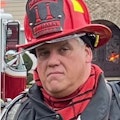
Michael Daley
MICHAEL DALEY, who is a Firehouse contributing editor, recently retired as a 37-year veteran who served as a captain and department training officer in Monroe Township, NJ. He is a staff instructor at multiple New Jersey fire academies and is an adjunct professor in the Fire Science Program at Middlesex County College. Daley is a nationally known instructor who has presented at multiple conferences, including Firehouse Expo and Firehouse World. His education includes accreditations as a Chief Training Officer and a Fire Investigator, and he completed the Craftsman Level of education with Project Kill the Flashover. Daley is a member of the Institution of Fire Engineers and a FEMA Instructor and Rescue Officer with NJ Urban Search and Rescue Task Force 1. He operates Fire Service Performance Concepts, which is a training and research firm that delivers and develops training courses in many fire service competencies.
